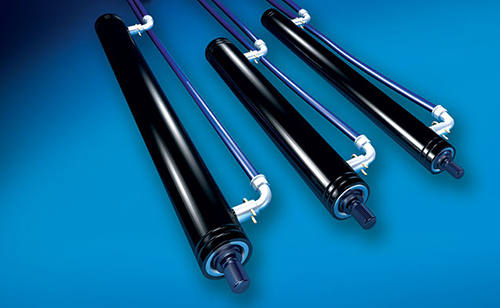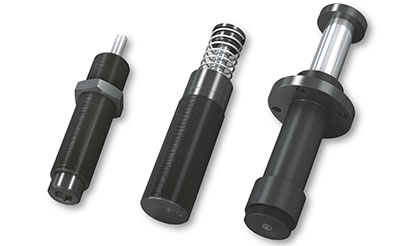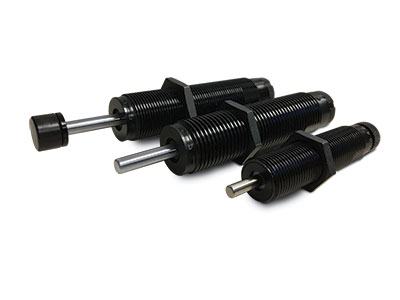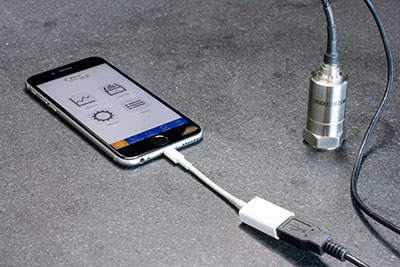
With the new micro-hydraulic cylinders by Bansbach Easylift, high forces can be realized in a compact construction. With the standard piston diameters from 13-24mm and a maximum pressure of 200 bar, forces up to 9,000N can be achieved.
Machine builders are now dealing with outside influences in their designs more and more as manufacturers must meet size, environmental and pricing needs.
Sizing down
With tighter tolerances and smaller machine footprints, miniaturization becomes crucial to the components that go inside of them. This is especially true in machine automation and robotics, where motions must be controlled smoothly and safely. For example, in rapidly growing markets, such as those that use industrial robots and drones, motion stabilization requires the use of hydraulic dampers, particularly micro-hydraulic designs.
Robotics continue to become smaller so Bansbach EasyLift has developed micro-hydraulics and smaller components to meet these market demands, said David Vickery, VP Product Development, Bansbach EasyLift of North America.

Miniature shock absorbers from ACE Controls are compact, maintenance-free, hydraulic machine elements that can be easily and quickly integrated in any design. Certain models can be directly integrated in pneumatic cylinders. They reduce the load and increase the efficiency for handling devices, rotary and pivoting actuators, linear cylinders and many other industrial applications. ACE ensures a long service life with innovative sealing techniques, shock absorber and inner pressure chambers fully machined from solid high tensile alloy steel. Pictured here are ACE’s Magnum safety shock absorber designs.
“We recently designed and introduced a new “Power Pack” line of micro-hydraulic cylinders that offer high forces in a small form factor. These micro-hydraulic cylinders provide design engineers with new options in robotics and automated systems where size and weight constraints are prevalent,” Vickery said. “With the standard piston diameters from 13 – 24 mm and a maximum pressure of 200 bar, forces up to 9,000 N can be achieved. The stroke can be customized according to the customer’s requirements.”
Gregory Herman, ITT Enidine’s Director of Sales and Product Management agreed. He added, “The design intent of many of our products is based on maximizing utilization of the space and design so that customers can use smaller products than they would have five or 10 years ago. This maximizes space constraints and supports customers budget needs.”
Optimizing safe designs
Creating designs that are safe—both for the operator, the machine itself and the surrounding environment—is par for the course with shock absorbing and vibration technologies, said ITT Enidine’s Herman. He added that product customization is generally due to environmental considerations in the application and not related to other motion issues.

ITT Enidine released the first environmentally friendly shock absorber that stands up to the harsh environments provided by today’s most critical applications. The ECO Series was designed using materials and fluids that are safe for the environment.
Additionally, Herman said, “With a greater emphasis on safety, there are increasing application needs for products that mitigate the effects of energy in a system, making products and machinery safer to the user.”
Herman concluded noting that its important to consider the hydraulic fluids used in Enidine’s shock absorbers, so the company is always looking to use environmentally safe fluids in its products.
Sizing software, apps simplify selection
Whether they are using desktop CAD sizing options or apps designed for smartphones, engineers are regularly turning to online options to help with their designs before jumping in with sales or application engineers.
When it comes to sizing shock absorbers, dampers, gas springs, wire rope isolators, etc., online calculations help make the engineer’s job easier.
Bansbach EasyLift—“Our website hosts multiple design tools to make an engineer’s job easier,” said Vickery. “We have an Online CAD configuration tool as well as CAD files and datasheets that can be downloaded for our products. This allows our customers’ engineering staff to quickly load our parts into their software for modeling.”
ITT Enidine—The company offers a web-based sizing software called ENISIZE at www.enisize.com. “This tool enables the user to size the appropriate product for their application, but also allows the customer to compare other possible solutions to evaluate performance and efficiency differences as well as enabling the user to review how changes in their design may change the selection of the product,” said Herman.

The VibroChecker app from Ace Controls uses the acceleration sensors, gyroscopes and microphones integrated in the iPhone and iPad to measure vibrations on machines and components within a frequency range of up to 50 Hz.
ACE Controls—The company’s VibroChecker PRO native iOS app turns iPhones and iPads into professional vibration and impact measuring devices. The mobile app uses the acceleration sensors, gyroscopes and microphones integrated in the iPhone and iPad to measure vibrations on machines and components within a frequency range of up to 50 Hz.
The app measures and records accelerations over time and calculates the spectral range using a FFT. The integrated 3-channel acceleration sensor has a sensitivity level of around 0.02 g and a range of ± 2g.
This sensitivity, with an adjustable scanning rate of 10 to 100 Hz for the internal sensor and 1 to 16 kHz for the external Digiducer, means that the acceleration sensors are capable of measuring vibrations, defective bearings, excitation frequencies of machines, and accelerations during material transport in a simple and accurate way.
Once the measurement has been completed, results can be saved or simply sent to a desktop or to a specialist using the email function.
Sorbothane—Its Engineering Design Guide includes the material properties of both Sorbothane and Water-Resistant Sorbothane. The guide highlights shape factor, static deflection, system natural frequencies and transmissibility. The Engineering Guide covers calculating both its vibration response and shock response.
This design guide has been developed to assist engineers in a practical, hands-on approach to designing with Sorbothane. Sorbothane is a polyether-based polyurethane isolation material for absorbing shock and vibration. In many applications it has absorbed up to 94.7% of the impact force.
A windows-based program “Design Guide,” which parallels the calculation method, can also be downloaded from the Sorbothane website.
Filed Under: News, Slider